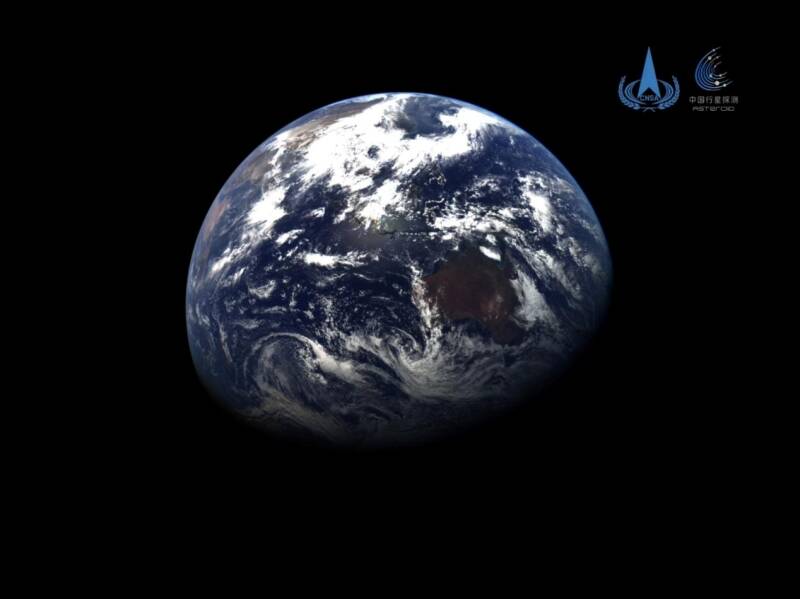China’s Tianwen 2 spacecraft has now traveled more than 12 million kilometers from Earth on its ambitious asteroid sample-return mission, the China National Space Administration (CNSA) announced Tuesday. Over a month into its journey, the probe remains in excellent condition as it continues along its planned trajectory toward the near-Earth asteroid 2016 HO3.

Tianwen-2 probe captured the image of the Earth when it was about 590,000 km away, May 30, 2025. /CNSA
The CNSA also released the first images captured by the mission, showing Earth and the Moon as seen from a distance of approximately 590,000 kilometers. These photos, taken by the spacecraft’s navigation camera, mark a milestone in the mission and offer a stunning visual reminder of its progress.
Launched on May 29 aboard a Long March 3B rocket from the Xichang Satellite Launch Center, Tianwen 2 is China’s first mission aimed at collecting unaltered samples from an asteroid. The spacecraft is expected to reach its primary target—asteroid 2016 HO3, also known as 469219 Kamo‘oalewa—by mid-2026.
The asteroid, estimated to be 40 to 100 meters in diameter, is classified as a quasi-satellite because it maintains a stable orbit near Earth while circling the Sun. Once it reaches the asteroid, Tianwen 2 will deploy an array of 11 scientific instruments, including radars, spectrometers, and high-resolution cameras, to thoroughly examine the object's surface.

Tianwen-2 probe captured the image of the moon when it was about 590,000 km away, May 30, 2025. /CNSA
Using specialized sampling tools, the probe will collect material from the asteroid and store it in a return capsule designed for safe delivery back to Earth. Upon return, the capsule will separate from the main spacecraft, re-enter Earth’s atmosphere, and be recovered for detailed analysis.
Scientists will study the retrieved samples to gain deeper insights into the asteroid’s structure, chemical makeup, and isotopic composition—clues that could unlock secrets about the origins of the solar system.
In a bold extension of its mission, Tianwen 2 will then set course for a second destination: 311P, a main-belt comet known for its unusual dust ejection activity. There, the spacecraft will conduct a remote-sensing survey, transmitting valuable data back to Earth.
Experts say the dual-target mission could yield transformative discoveries and significantly advance our understanding of small bodies in the solar system, as well as the dynamic environment around our planet.


Add comment
Comments